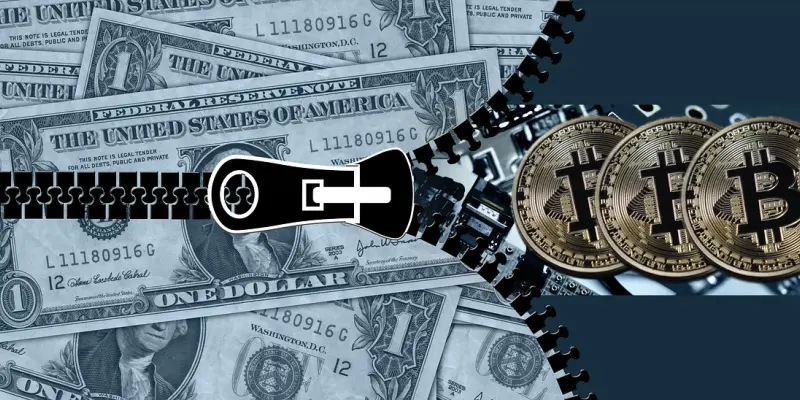The notion that digital art and cryptocurrency could merge into a single groundbreaking concept has intrigued many since the early days of blockchain technology. Mundicoin, an innovative artwork cum cryptocurrency, stands as a testament to the complex relationship between these two realms. Initiated by artists Elliott Arkin and Marc Lafia, Mundicoin was conceived entirely based on philosophical ideals rather than tangible assets, creating a unique blend of financial and artistic expression. The intriguing journey of Mundicoin sheds light on the inherent challenges and tensions that arise when art intersects with stringent financial regulations.
The Birth of Mundicoin
When Tim Schneider, the founder of Gray Market and art business editor at Artnet News, published his groundbreaking essay in February 2018, he brought Mundicoin to the forefront of digital art discussions. Schneider’s comprehensive three-part series explored how artists could leverage blockchain technology, and in the pivotal second installment, he highlighted Mundicoin as a principal innovator. He praised its ability to challenge conventional art boundaries and its place among other digital art projects like CryptoKitties and Sarah Meyohas’s Bitchcoin. Labeling Mundicoin as a memecoin that transcended into art, Schneider’s analysis undoubtedly thrust the project into the limelight.
Buoyed by this recognition, Arkin and Lafia embarked on an ambitious plan to secure $500,000 in funding to further cultivate Mundicoin. However, their plans encountered a significant obstacle in May 2018. A Bolivian cryptocurrency, originally called Mundo Virtual, rebranded itself as Mundicoin. Recognizing the need to protect their intellectual property, Arkin applied for a trademark in the United States and received preliminary approval. This move opened the process for existing rights holders to challenge the claim, setting the stage for an impending legal battle that would shape the project’s future.
Trademark Dispute and Amundi’s Challenge
The situation grew more complicated when Amundi Asset Management, Europe’s largest asset management firm, contested Arkin’s trademark on the grounds of potential brand confusion. Arkin found the claim absurd, questioning how a conceptual artwork could be mistaken for a major financial services company. Nonetheless, he and Lafia faced an arduous and costly legal battle against an entity with vast resources. The disparity in their financial power made the prospect daunting, forcing Arkin to reevaluate how to preserve the integrity of their work.
In June 2020, amid the grueling legal battle, Arkin and Lafia made the difficult decision to sell the entire Mundicoin project, including the trademark, to Amundi. While the amount of the sale remained undisclosed due to a non-disclosure agreement, Arkin stood by the choice as a way to protect the historical significance and integrity of their conceptual endeavor. It was a pragmatic move acknowledging the harsh realities artists face when confronting colossal financial institutions.
Renewed Interest and Legal Complications
Fast forward to 2024, and Mundicoin reemerged in the public sphere when Donald Trump, running for president, launched his own meme-based cryptocurrency called $TRUMP. This unexpected development reignited interest in Mundicoin among collectors and cryptocurrency enthusiasts alike, leading to new inquiries about its status and ownership. The resurgence placed the spotlight back on the unique intersection of art and cryptocurrency that Mundicoin represented.
The renewed interest sparked legal complications. When Dutch art collector Ben Van Meerendonk expressed a desire to purchase Mundicoin, Amundi’s attorney, Matthew Lombard, stated that Amundi had not acquired any artwork from Arkin, only the trademark. This statement prompted Arkin to recall the terms of their agreement, reminding Amundi of his rights under the Visual Artists Rights Act of 1990 (VARA). This act safeguards artists from unauthorized alterations to their works and ensures recognition of their authorship. Arkin’s stance was clear: Mundicoin was an inseparable artwork, with its name integral to its identity and value.
The Argument for Artistic Integrity
Arkin’s argument hinged on the notion that Mundicoin was an indivisible artwork, likening Amundi’s actions to erasing “R. Mutt” from Marcel Duchamp’s urinal, stripping it of its renowned artistic value. Arkin’s attorney issued a legal notice to Amundi, claiming their actions violated the original agreement and stressing the necessity of maintaining the artwork’s authenticity. Amundi’s argument rested on the separation of the trademark from the underlying artistic concept, insisting they controlled the term “Mundicoin” while permitting Arkin to retain the underlying art under a different moniker.
This ongoing legal battle underscores vital questions about the treatment of digital and blockchain-based artworks and artist’s rights in a continuously evolving digital era. The resolution of this dispute may set a precedent significantly impacting how such artworks are defined, owned, and protected moving forward. The evolving legal interpretations could either affirm or challenge artists’ control over both the conceptual and nominal aspects of their work, ultimately shaping how future digital artworks are perceived and protected.
Implications for the Future of Digital Art
The concept of digital art merging with cryptocurrency into a pioneering idea has fascinated many since blockchain technology’s early stages. Mundicoin, a groundbreaking creation that bridges art and cryptocurrency, exemplifies the intricate bond between these fields. Initiated by artists Elliott Arkin and Marc Lafia, Mundicoin was founded entirely on philosophical perspectives rather than physical assets, merging financial innovation and artistic expression uniquely. The journey of Mundicoin highlights the inherent challenges and conflicts encountered when the art world clashes with stringent financial regulations. This pioneering project not only showcases the creative potential within cryptocurrency but also brings forward critical discourse on the value and perception of both art and digital currency. As Mundicoin navigates these complexities, it serves as both a financial instrument and an artistic statement, revealing how deeply intertwined and multifaceted these modern innovations are as they shape new narratives in both art and finance.

